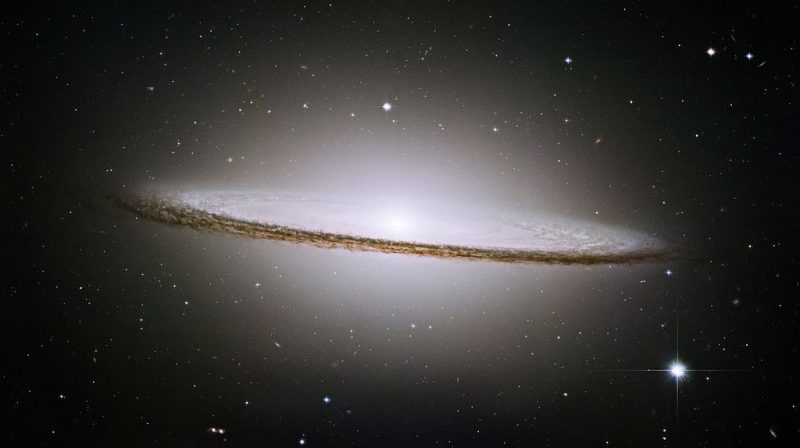
The Sombrero galaxy in infrared
The James Webb Space Telescope, which explores the universe in infrared light, has a new view of an old favorite: the Sombrero galaxy. ESA and NASA released this image of the Sombrero Galaxy (M104) – which lies 30 million light-years from Earth in the constellation Virgo – on November 25, 2024. Webb’s Mid-Infrared Instrument (MIRI) lets us see past the blinding brightness and the finer dust to the inner core region and speckles of stars. Webb, like Hubble, sees dust in the outer ring, but reveals how it is distributed in intricate clumps.
The Sombrero Galaxy is not a place of especially active star formation. And the supermassive black hole at the galaxy’s core – what astronomers call an active galactic nucleus, or AGN – is, despite its mass, what ESA calls “rather docile.”
The 2025 EarthSky lunar calendar makes a great gift. Get yours today!
By the numbers
The Sombrero galaxy produces less than one solar mass of stars per year. The Milky Way’s star production is about twice that high, but both galaxies have mostly already converted their gas and dust into stars. Compare that to the starburst galaxy M82, which sees 10 to 20 times more stars born per year than the Milky Way and Sombrero.
The supermassive black hole at the center of the Sombrero galaxy has the mass of about 9 billion solar masses. This is on the heavier end, as far as supermassive black holes go. And the Sombrero is home to some 2,000 globular clusters, or massive balls of stars held together in a spherical clump by their own gravity.

See it for yourself
The Sombrero Galaxy is located on the southeastern border of Virgo the Maiden near the constellation Corvus the Crow. Without a doubt, M104 is a stunning galaxy in photographs. Even better, at magnitude 8.3, you can see it in small telescopes. It’s an edge-on, dusty spiral galaxy with a bright core.
Bottom line: The Webb Space Telescope has delivered a stunning view of the Sombrero galaxy, M104, in infrared. See it here and read more about it.











